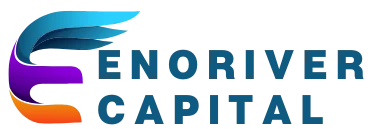In a world where coding languages seem to multiply faster than rabbits, Ruby stands out like a diamond in a sea of rocks. With its elegant syntax and powerful capabilities, it’s no wonder developers are flocking to learn Ruby. Whether you want to build web applications or automate mundane tasks, Ruby has got your back—like a trusty sidekick in a superhero movie.
But let’s be honest: diving into programming can feel like trying to decipher an ancient scroll written in hieroglyphics. Fear not! This guide will turn that scroll into a user-friendly map, leading you step-by-step through the enchanting world of Ruby. Get ready to unlock your coding potential and impress your friends with your newfound skills. Who knew programming could be this much fun?
Table of Contents
ToggleOverview of Ruby Programming
Ruby serves as a dynamic, open-source programming language favored by many for its simplicity and productivity. Developers often appreciate its elegant syntax, which closely resembles natural language, making it easier to read and write code.
The language excels in various domains, especially web development, with frameworks like Ruby on Rails providing robust solutions for building scalable applications. Ruby stands out for its emphasis on convention over configuration, allowing programmers to focus on development instead of wrestling with intricate settings.
Ruby supports multiple programming paradigms, including functional and object-oriented programming. This flexibility enables developers to choose the approach that best fits their project requirements. The language possesses a rich ecosystem, boasting numerous libraries and gems that expand its capabilities significantly.
Several attributes contribute to Ruby’s popularity among beginners and experienced developers alike. First, it encourages experimentation and exploration, fostering a learning environment. Second, an active community surrounds Ruby, providing ample resources for learning and sharing knowledge. Users can easily find documentation, tutorials, and forums offering support and insights.
With an intuitive design, Ruby allows for rapid application development. Its built-in tools streamline tasks such as testing and debugging, helping developers maintain high code quality. The focus on developer happiness emphasizes a positive coding experience, enhancing productivity and creativity.
In contrast to other programming languages, learning Ruby can empower individuals to transform ideas into functioning applications quickly. Seeking to master Ruby programming creates opportunities to build meaningful projects and collaborate with others in a vibrant community.
Benefits of Learning Ruby

Learning Ruby offers numerous advantages for aspiring and seasoned developers. Its elegant design and powerful features contribute to an engaging programming experience.
Versatility in Application Development
Ruby’s flexibility enables developers to create a variety of applications. Web developers often rely on frameworks like Ruby on Rails for efficient project completion. Applications range from simple scripts to complex web services, demonstrating Ruby’s adaptability. Its ability to handle various programming paradigms, such as object-oriented and functional programming, allows developers to choose the approach that best fits their project needs. The language seamlessly integrates with systems and databases, making it a practical choice for diverse development tasks.
Active Community Support
An active community surrounds Ruby, providing a wealth of resources and support. Developers can access various forums, online groups, and events to exchange knowledge and experiences. This community fosters collaboration and encourages sharing of solutions to common challenges. Numerous open-source libraries and gems are available, enhancing Ruby’s functionalities and simplifying programming tasks. This extensive support system streamlines the learning process, allowing newcomers to seek help and participate in discussions. Their involvement leads to continuous improvement and innovation within the Ruby ecosystem.
Getting Started with Ruby
Ruby offers a straightforward path for beginners. Setting up the development environment marks the first step in this journey.
Setting Up Your Development Environment
Choose an operating system for installation. For Windows users, RubyInstaller simplifies the process. Mac and Linux users can install Ruby using built-in package managers like Homebrew or APT. After installing Ruby, verify the installation with the command ruby -v in the terminal. Next, consider setting up a code editor. Popular choices include Visual Studio Code and Atom, both known for their user-friendly interfaces and helpful extensions.
Basic Syntax and Structure
Ruby’s syntax emphasizes readability. Each line of code typically represents a single instruction. Curly braces or do...end can wrap code blocks, depending on preference. Variables in Ruby do not require explicit type declaration; thus, developers can start with simple examples like name = "Ruby". Control structures such as if, unless, and case facilitate logical flow. Many foundational elements, including methods and classes, contribute to Ruby’s flexibility and power. Overall, these features make learning Ruby both enjoyable and rewarding.
Resources for Learning Ruby
Finding quality resources for learning Ruby enhances the development journey. Various options exist, catering to different learning styles and preferences.
Online Courses and Tutorials
Websites like Codecademy and Udemy offer comprehensive Ruby courses. Codecademy provides interactive lessons, helping learners practice coding as they progress. Udemy features a broad selection of Ruby courses suited for all skill levels. Additionally, platforms such as Coursera partner with universities to offer structured courses along with certificates. Users can benefit from community forums where they can ask questions and share insights. YouTube also hosts countless Ruby tutorial videos, offering visual learners an engaging way to grasp concepts. Combining these resources maximizes learning potential.
Books and Documentation
For an in-depth understanding of Ruby, consider classic books like “The Well-Grounded Rubyist” and “Ruby Programming for Beginners.” The Well-Grounded Rubyist delves into Ruby’s syntax and advanced features, ideal for intermediate learners. Ruby Programming for Beginners serves as a smooth introduction for newcomers. Official documentation on the Ruby website provides comprehensive references and guides. Other notable resources include “Programming Ruby,” known for its clear explanations and practical examples. These books and documents serve as solid companions throughout the learning journey, enhancing knowledge and skills.
Best Practices for Ruby Programming
Writing clean and maintainable Ruby code ensures long-term project success. Adopting consistent naming conventions for variables, methods, and classes promotes clarity and readability. Using snake_case for method names and lower_case for variables encourages uniformity across the codebase.
Implementing robust error handling distinguishes high-quality code. Utilizing begin-rescue blocks prevents application crashes and manages unexpected issues smoothly. Testing code regularly with tools like RSpec or Minitest strengthens overall reliability and exposes potential bugs early.
Organizing code into smaller, reusable methods enhances modularity. It improves code reuse and fosters easier debugging, as each method should ideally perform single tasks. Structuring classes properly, adhering to SOLID principles, supports better design patterns and ensures scalability.
Comments play a crucial role in Ruby programming. Adding relevant comments clarifies the purpose of complex functions and guides future developers in understanding logic. Writing documentation alongside the code allows easier onboarding for new team members and facilitates smoother collaboration.
Keeping dependencies up-to-date is vital for project health. Regularly updating gems not only enhances performance but also addresses security vulnerabilities. Using a Gemfile to manage dependencies ensures consistency in different environments, making it easier to reproduce project setups.
Lastly, engaging with the Ruby community accelerates learning. Participating in forums, attending meetups, or contributing to open-source projects provides practical insights and support from experienced developers. Leveraging community resources enriches the journey of mastering Ruby and promotes ongoing skill development.
Embracing Ruby programming opens doors to a world of creativity and innovation. Its elegant syntax and dynamic capabilities make it an ideal choice for both beginners and experienced developers. By diving into Ruby, individuals can develop practical skills that enhance their ability to build diverse applications.
The supportive Ruby community and wealth of resources ensure that learners have access to guidance and inspiration throughout their journey. As they practice best coding practices and engage with fellow developers, they’ll cultivate a deeper understanding of programming concepts.
Ultimately, learning Ruby not only equips individuals with essential technical skills but also fosters a sense of accomplishment and belonging within a vibrant community.










